Call On Every Individual In Aviation to Contact Elected
Officials ASAP In Response To Attack On Aviation Industry
By Maxine Scheer
Leaders from seven aviation industry organizations sat together
at the EAA Welcome Center on Wednesday afternoon to discuss
critical concerns on the Federal and State legislative fronts that
were consistently referred to as some of the greatest threats the
aviation industry has ever faced. The event was titled,
“Stronger Together”, and each industry association
leader reiterated points recognizing each GA segments differences,
but also emphasized that the aviation industry is clearly under
attack and that an aggressive and unified front is critical in
protecting the freedoms and rights of the various aviation
stakeholders.
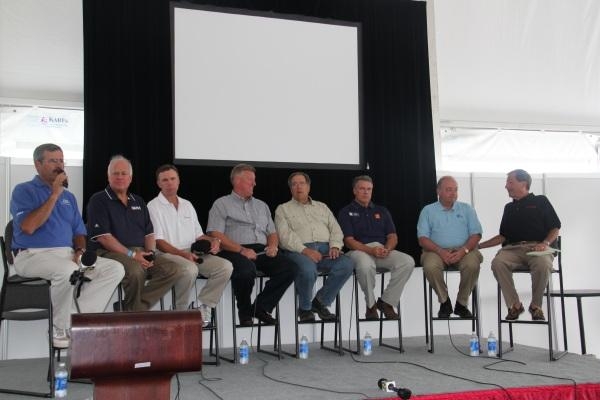
The panel included James Coyne, President and CEO of NATA, Ed
Bolen, President of NBAA, Rod Hightower, President of EAA, Craig
Fuller, President of AOPA, Matthew Zuccaro, President of HAI, Peter
Bunce, President of GAMA, and Henry Ogrodzinski, President of
NASAO. Each leader outlined pending legal, regulatory, and
legislative actions that have arisen during the last 4 months,
stemming from the deficit crisis that Congress is attempting to
resolve and the approval of the FAA Reauthorization Bill.
James Coyne, President and CEO of NATA began the discussion with
an issue that potentially affects anyone who operates or fuels
aircraft that use 100LL. “Our whole industry is under attack,
and not just at the Federal level.” Coyne went on to describe
how in California, the providers of aviation fuel were recently
served with a notice of violation for lack of notification to the
public of the presence lead, an estimated 1.5 grams that exists in
a gallon of 100LL. Lead is identified as a hazardous material in
California. Coyne described it as “a very expensive
lawsuit”, especially considering the relatively small profits
derived from the sale of this fuel and the lengthy process the
industry, including FAA, expects to identify a replacement.
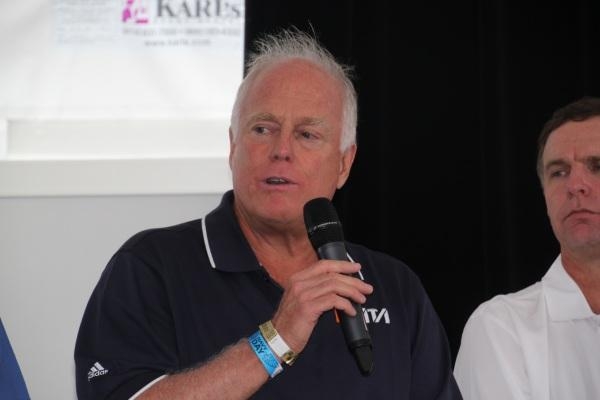
James Coyne
Coyne reported that NATA filed a lawsuit in response against the
California Attorney General, basically citing rules that do not
allow States to preempt Federal rules. “The State does not
have a right to interfere with the Federal regulation of
Aviation,” said Coyne, a former member of Congress from
Pennsylvania. Coyne described it as “a life or death issue
for this industry” and asked for help from members of the
aviation community that have some leverage [at the State level].
“The last thing we want is for one state to prohibit the sale
of 100LL.”
NBAA’s Ed Bolen also noted an impasse that has resulted in
a legal action filed within the last few days by a number of the
industry associations (e.g. NBAA, AOPA, EAA) against DOT for their
promulgation of a rule, that begins August 2, 2011, significantly
limiting a pilot’s right to “opt–out” from
the “Blocked Aircraft Registration Request Program.”
While issues of privacy were raised and resolved by an act of
Congress is 2000, Bolen described how DOT has essentially ignored
public comment and the strong support by Congress of the BARR
program.
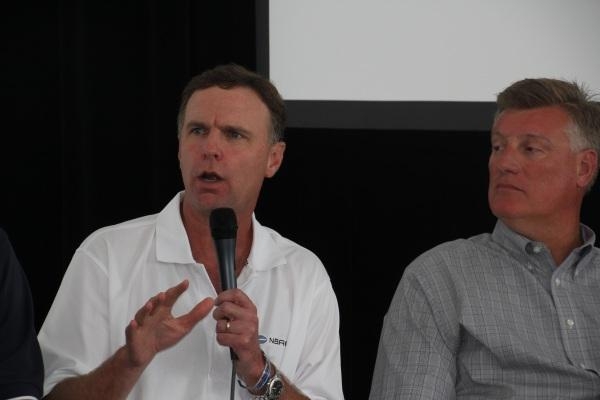
Ed Bolen
In paraphrasing the new rule’s intent, Bolen noted,
“they are basically saying that when you file a flight plan
we are going to let everyone know who you are unless you prove to
us that there is a security threat”. “This is a big
deal,” said Bolen, as he noted other supporters who recognize
the significance, ranging from the ACLU to the US Chamber of
Commerce. “We believe we will win, but unfortunately our day
in court will not happen before the 2nd of August. Collectively we
are going to win.”
Rod Hightower expressed his appreciation to the industry leaders
for their “coaching on dealing with Washington”. He
emphasized EAA’s role in bringing people together and in
sharpening the focus of creating the next generation of aviators
through enhancements to EAA’s funding and support of the
Young Eagles program to take participants through pilot
certification, providing more financial support and mentoring. In
relaying a message to other association leaders Hightower noted,
“one of the things that unifies all of us is growing the
pilot population,” and expressed interest in collaborating in
areas such as improving the flight training experience.
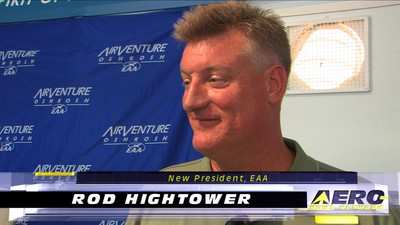
Craig Fuller of AOPA expressed his appreciation for AirVenture
and its role in bringing the industry together. He agreed with
Hightower’s points on the need for student pilots to progress
to certification. Fuller noted statistics from a study which
recognized the success of attracting student pilots, but resulted
in an estimated student pilot attrition rate approaching 80% on a
national level. Fuller emphasized the need to recognize and
implement lessons learned from training programs that achieved
higher percentage levels of completion and certified pilots who
continued to fly. “We are absolutely facing a pilot
shortage,” asserted Fuller. “The airlines don’t
know where they are going to find them and are looking to the
general aviation industry [for help].”
Fuller went on to discuss the “User Fee” issue,
which he noted as being “back on the table, but in the most
insidious way. Not as a piece of legislation, but as a part of one
big package that involves trillions of dollars over ten
years.” Fuller attempted to express the need for
aviation stakeholders to communicate to Congress that the user-fee
model would not achieve its objective, and would put general
aviation “at risk.” Fuller noted that “thousands
have talked to members of Congress and the message has gotten
through.” He asked for the industry’s focus on this
issue to be unrelenting.
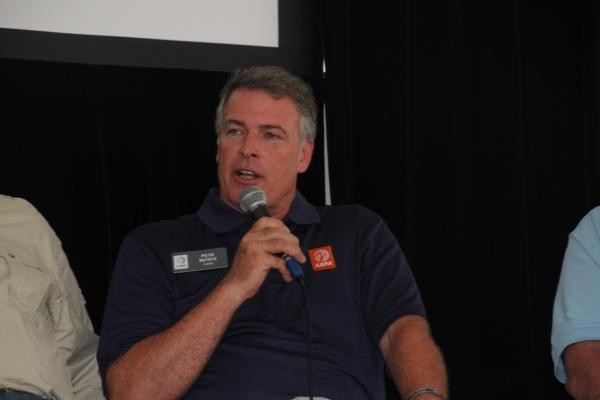
Pete Bunce
Peter Bunce of GAMA apologized for getting political, but urged
industry members to recognize the impact of President Obama’s
"rhetoric" on business aviation. He brought up the example of a
proposal to change the business aircraft depreciation schedule from
five to seven years as having a potentially huge impact on the
whole industry. He reiterated to the participants “the
aviation industry is not just pilots.” He pointed to a
number of examples he categorized as inconsistencies between what
the President is saying about goals for manufacturing and exports
and negative impacts of efforts to garner more revenues from
business aviation.
Matt Zuccaro of HAI described a number of challenges that the
helicopter industry is facing, one of which is a great deal of
misinformation. He described how industries, such as emergency
medical transport, could be unnecessarily subject to more
restrictions for incidents that are ultimately associated with the
need to improve safety training for flights under FAR Part 91.
Another area of concern to HAI is the issue of preserving
heliports and increasing capacity. He reported that HAI is working
with FAA to revise the AC’s on Heliport Design and noted that
States are imposing AC recommendations as “requirements which
is constricting new heliports and heliport improvements."
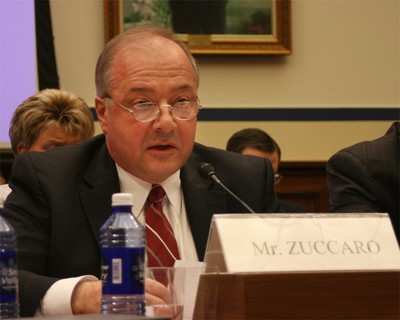
Matt Zuccaro
The third item for HAI was a recent action by Senator Charles E.
‘Chuck’ Shumer (D-NY), and a recent NPRM to establish
mandatory routes, restricting airspace access for rotorcraft. He
described it as a “draconian measure” based on a
handful of household complaints of noise that could have
potentially huge implications for general aviation. “While
the industry provided over a thousand complaints, at the 11th hour
it became an amendment to the FAA Reauthorization.” Zuccaro
urged the associations to keep this item on the radar. “Once
it becomes OK for helicopters, it will come to GA.”
Henry “O” from NASAO emphasized the impacts on
construction projects funded by the Airport and Airway Trust Fund
and reported that NASAO is working with the airport associations to
support bills recommending a "clean" continuing resolution for
FAA.
Closing remarks by the participants were basically a "call to
action." Ed Bolen noted that in the last few weeks the efforts of
“the folks back home” were having an impact on the
willingness of members of Congress to listen to industry
concerns.
Fuller noted “normally there is a predictable legislative
process, but this process has more closed door meetings.”
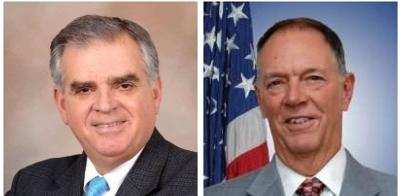
Rod Hightower closed the session by noting that FAA
Administrator Babbit was coming to AirVenture and that Secretary of
Transportation, Ray LaHood, would be joining him. They are
scheduled for the “Meet the Administrator Forum”,
Thursday, 11:30 at the EAA’s Honda Pavillion. All attendees
at AirVenture are welcome, and are encouraged to attend.
 Aero-News: Quote of the Day (04.28.25)
Aero-News: Quote of the Day (04.28.25) ANN's Daily Aero-Term (04.28.25): Decision Altitude (DA)
ANN's Daily Aero-Term (04.28.25): Decision Altitude (DA) ANN's Daily Aero-Linx (04.28.25)
ANN's Daily Aero-Linx (04.28.25) Airborne-Flight Training 04.24.25: GA Refocused, Seminole/Epic, WestJet v TFWP
Airborne-Flight Training 04.24.25: GA Refocused, Seminole/Epic, WestJet v TFWP Aero-News: Quote of the Day (04.29.25)
Aero-News: Quote of the Day (04.29.25)









